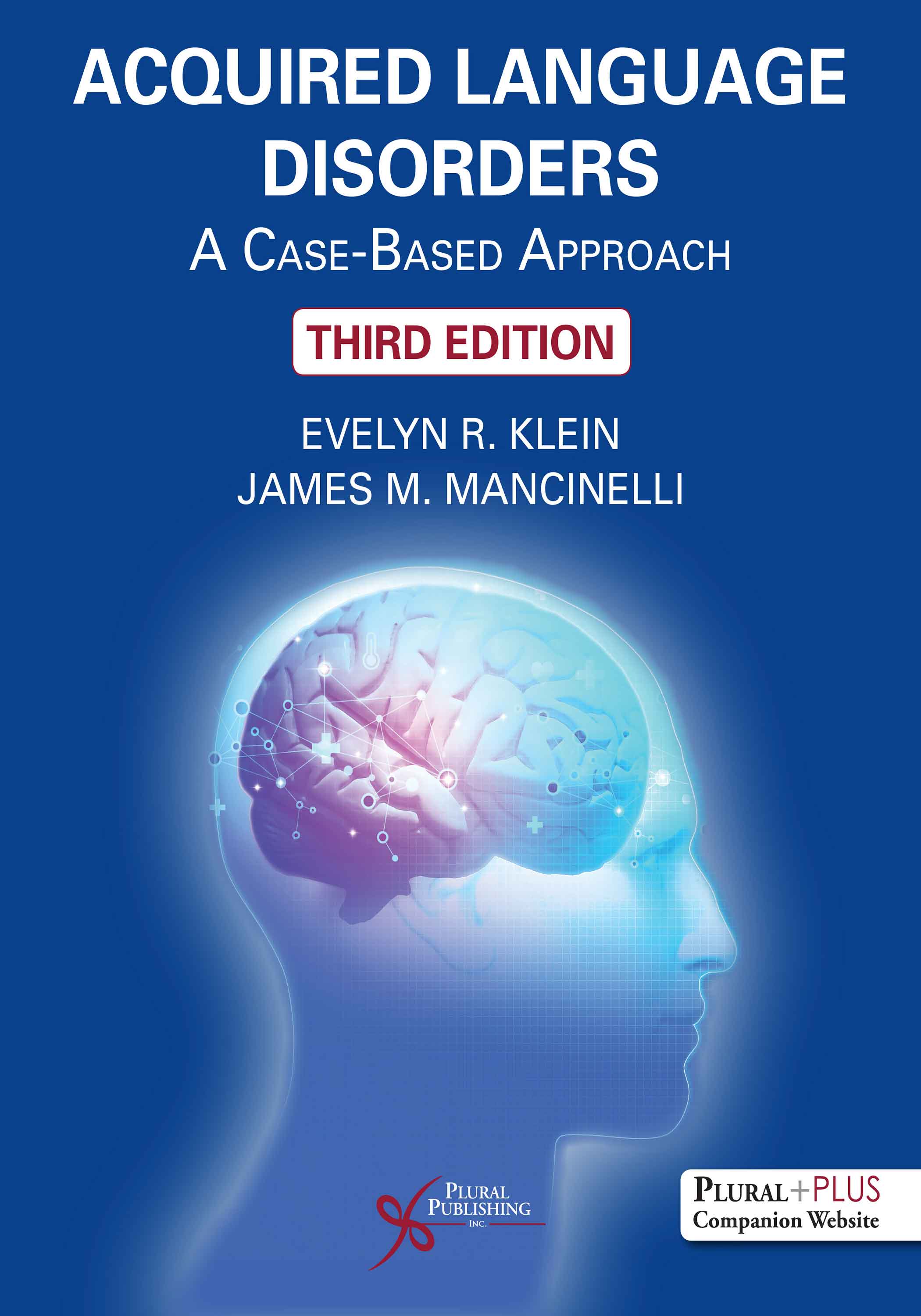
Acquired Language Disorders: A Case-Based Approach.
Third Edition
Evelyn R. Klein, James M. Mancinelli
Details: 327 pages, B&W, Softcover, 8.5" x11"
ISBN13: 978-1-63550-097-4
© 2021 | Available
Acquired Language Disorders: A Case-Based Approach, Third Edition, is a practical, easy-to-follow, informative guide for students and clinicians. The authors present each case from an impairment-based perspective with practical applications for improving activities of daily living, as well as a socially interactive perspective to create a wholistic picture of each case. For people with aphasia, clinicians are encouraged to consider not only language but also executive functions, attention, memory, and visuospatial skills. This edition begins with a review of the basics of brain-behavior relationships and pertinent medical terminology for treating individuals who have a neurological impairment. Each disorder is then introduced in a case-based format that includes a case scenario with a photo, functional analysis of the patient, critical thinking/learning activities, a diagnostic profile, the new Target Assessment Snapshot, treatment considerations, and a Venn diagram of the A-FROM Model with patient goals for each case. Special features include “Test Your Knowledge” sections based on 10 patient scenarios along with an answer key, a Quick Reference Diagnostic Chart for ALDs, and a Functional Communication Connections worksheet for treatment planning purposes.
New to the Third Edition
- The 15 clinical cases include new photos along with the Target Assessment Snapshot depicting level of severity for expression, comprehension, reading, and writing and areas of cognitive impairment. A new case includes a bilingual person with aphasia.
- All chapters have been updated with relevant research.
- An A-FROM model graphic for each patient’s treatment goals is included.
- There is a new Assessment Summary Sheet to help the clinician with the development of a diagnostic profile.
- The chapter on assessment is updated and new assessments are added, including the Assessment of Living with Aphasia (ALA) and the Repeatable Battery for the Assessment of Neuropsychological Status (R-BANS), the Progressive Aphasia Severity Scale (PASS), and more.
- Chapter 10 includes more than 25 treatment approaches and therapeutic programs.
- The chapter on assessment and service delivery for people with ALD includes discussions of the ICF and the A-FROM Model.
- The PowerPoint lecture slides to augment the text are now accessible on a PluralPlus companion website.
Review
“Acquired Language Disorders. A Case-Based Approach, constitutes a comprehensive case-based guide through different scenarios of language loss. This format aims at supplying (new) clinicians and students with a highly informative practice-oriented overview of both theoretical notions and clinical research built from specific examples. The different syndromes described in the volume are approached from all possible angles. Information ranges from purely descriptive aspects to practical issues, including assessment tools, diagnosis and treatment programmes. A prominent role is given to associated disabilities and functional aspects. This turns Acquired Language Disorders into a highly useful tool, both for teaching purposes and general consultation. The authors, using a skillful combination of clinical and teaching experience, gather together an overarching selection of cases. Although major aphasic syndromes occupy a prominent position throughout the volume, careful attention has been paid to including currently ongoing debates about different populations (e.g., aphasia in bilinguals), neurodegenerative pathologies (e.g.,dementia) and other less investigated scenarios such as the encephalopathies.[…]
[T]he volume concludes with a list of appendices including practical worksheets such as a case history form, an assessment summary sheet, a cognitive linguistic evaluation, and a functional communication octagon for the planning of therapeutic activities, which aim at facilitating the development of diagnostic profiles and the subsequent treatment plans. It also provides further information about the World Health Organization and the International Classification of Functioning, Disability and Health. Interestingly, Appendix F includes a ‘Test your knowledge’ section with 7 additional cases and an answer key aimed at promoting critical thinking about the contents of the book. Given that Acquired Language Disorders. A Case-Based Approach is also envisioned as a tool for instructors, instructor materials to complement the text are made accessible on the PluralPlus website, enhancing the didactic potential of the book, which may be envisioned not only as a source of information but also as a reference for the creation of materials for practical exercises. All in all, half guide, half workbook, Acquired Language Disorders. A Case-Based Approach is an accessible source of information for clinicians and students and a useful tool for teachers interested in acquired language disorders. It covers all stages of the clinical procedure from the moment of assessment to the elaboration of a personalized treatment plan. Efficient learning is fostered by the abundant use of bullet points, images, diagrams and tables that complete the concise presentation of written information.”
—Silvia Martínez-Ferreiro, University of Toulouse, in Aphasiology (2021)
Introduction
Acknowledgements
Contributor
Chapter 1. An Overview of Neuroanatomy and Neurophysiology Related to Acquired Language Disorders (ALD)
The Neuron
Neurotransmitters
Sensory
The Brain: A Brief Review of Structure and Function
The Coverings of the Brain, Ventricles, and Cerebrospinal Fluid
Cerebral Cortex
The Brainstem
Subcortical Structures
The Cerebellum
Neural Pathways
Cerebral Blood Flow
Cerebrovascular Accidents
Brain Imaging and Selected Medical Tests for Acquired Language Disorders
CAT Scan or CT Scan
MRI
fMRI
PET Scan
SPECT Scan
ASL 9
Examination of the Carotids: Doppler Ultrasound or Auscultation of the Carotids
Endocardiography
Angiography
References
Chapter 2. Assessment and Service Delivery in Acquired Language Disorders
Approaches to Assessment in Acquired Language Disorders
Purpose of Assessment
Assessment of Language Functions
Characteristics of Aphasia
Definitions of the Clinical Characteristics of the Major Aphasias
Areas to Consider Using the ALD Target Assessment Model
The Target Assessment Snapshot in Acquired Language Disorders
Screening and Diagnostic Assessment
Screening Tests
Diagnostic Assessment in Acquired Language Disorders: Making Sound Decisions
Selected Assessments for Acquired Language Disorders
Modifications to Standard Assessments
Goal Setting Based on Diagnostic Results
Service Delivery and the World Health Organization
The International Classification of Functioning (ICF) and Living with Aphasia: Framework for Outcome Measurement (A-FROM model)
Service Delivery for People with Acquired Language Disorders
The Acute Care Setting
The Rehabilitation Setting
The Home Care Setting
The Outpatient Setting
The Long-Term Care (LTC) Setting
Monitoring Change and Continuation of Services
Documentation of Progress
Summary
References
Appendix 2–A: Functional Communication Connections Octagon
Appendix 2–B: Quick Reference Diagnostic Chart for Acquired Language Disorders
Chapter 3. The Major Non-Fluent Aphasias
Introduction
Broca’s Type Aphasia
Characteristics
A Functional Analysis of Maurice
Critical Thinking/Learning Activity
Treatment Considerations
Therapeutic Goals using A-FROM (Kagan, 2011)
Transcortical Motor Aphasia
Characteristics
A Functional Analysis of Vincent
Critical Thinking/Learning Activity
Treatment Considerations
Therapeutic Goals with A-FROM (Kagan, 2011)
Global Aphasia
Characteristics
A Functional Case Analysis for Elizabeth
Critical Thinking/Learning Activity
Treatment Considerations
Therapeutic Goals with A-FROM (Kagan, 2011)
References
Chapter 4. The Fluent Aphasias
Introduction
Wernicke’s Type Aphasia
Characteristics
A Functional Analysis of Mildred’s Wernicke’s Aphasia
Critical Thinking/Learning Activity
Treatment Considerations
Therapeutic Goals Using A-FROM
Transcortical Sensory Aphasia
Characteristics
A Functional Analysis of John’s TSA
Critical Thinking/Learning Activity
Treatment Considerations
Therapeutic Goals Using A-FROM
Conduction Aphasia
Characteristics
A Functional Analysis of Miriam’s Aphasia
Critical Thinking/Learning Activity
Treatment Considerations
Therapeutic Goals Using A-FROM (Kagan, 2011)
Anomic Aphasia
Characteristics
A Functional Analysis of Sophie’s Aphasia
Critical Thinking/Learning Activity
Treatment Considerations
Therapeutic Goals using A-FROM
References
Chapter 5. Other Aphasic Syndromes
Subcortical Aphasia
Introduction
Characteristics of Subcortical Aphasias
A Functional Analysis of Winnie’s Subcortical Aphasia
Critical Thinking/Learning Activity
Treatment Considerations
Therapeutic Goals Using A-FROM
Primary Progressive Aphasia
Introduction
Characteristics
A Functional Analysis of Luis’s Primary Progressive Aphasia
Critical Thinking/Learning Activity
Treatment Considerations
Therapeutic Goals Using A-FROM
Acquired Alexia and Agraphia
Characteristics
Alexia
Agraphia
A Functional Analysis of Sue’s Alexia
Critical Thinking/Learning Activity
Treatment Considerations
Therapeutic Goals Using A-FROM
Aphasia in the Bilingual Person
Recovery Patterns in Bilingual Aphasia
Cognitive Control in Differential Aphasia
A Functional Analysis of Hamid’s Bilingual Aphasia
Critical Thinking/Learning Activity
Treatment Considerations
Therapeutic Goals Using A-FROM
References
Chapter 6. Right Hemisphere Disorder
Introduction
Characteristics
Communication Deficits
RHD and Pragmatic Impairment
Visual-Perceptual Deficits
Visuomotor Deficits
Auditory Perceptual Deficits
Cognitive Deficits
A Functional Analysis of Debra
Critical Thinking/Learning Activity
Treatment Considerations
Therapeutic Goals Using A-FROM
References
Chapter 7. Traumatic Brain Injury
Introduction
Characteristics
Types of Brain Injury
Symptoms Related to Localization of the TBI
Prognostic Considerations in Head Injury
Premorbid Intelligence
Age at the Time of Injury
Duration of Coma
Posttraumatic Amnesia
Medical Complications
Posttraumatic Seizures
Hydrocephalus
Spasticity
Cognitive-Linguistic Impairment Due to TBI
Establishing Goals for the Therapeutic Course
Postconcussive Syndrome
Mild TBI (mTBI)
Rating Scales for Functional Outcomes
Rancho Los Amigos (RLA)
Disability Rating Scale (DRS)
General Treatment Issues
Errorless Learning
A Note about Generalization in People with TBI
A Functional Analysis of Samuel’s TBI
Critical Thinking/Learning Activity
Treatment Considerations
Therapeutic Goals Using A-FROM
References
Chapter 8. Dementia
Introduction
Characteristics
Diagnostic Factors
The Stages of Dementia
Memory Systems and Dementia
Types of Dementia
Vascular Dementia (VaD)
Parkinson’s Dementia
Fronto-Temporal-Parietal Dementias (FTP)
Creutzfeldt-Jakob Disease
Huntington’s Disease
Overview of Research on Treatment for Dementia
A Functional Analysis of Max’s Dementia
Critical Thinking/Learning Activity
Treatment Considerations
Therapeutic Goals Using A-FROM
References
Chapter 9. Encephalopathy
Introduction
Characteristics
Drug and Alcohol Intoxication: Two Common Etiologies for Encephalopathy
A Functional Analysis of Tommy
Critical Thinking/Learning Activity
Treatment Considerations
Therapeutic Goals Using A-FROM
References
Chapter 10. Selected Treatment Programs and Approaches
Historical Overview of Efficacy and Evidence in the Treatment of Acquired Language Disorders (ALD) in Adults
Randomized Controlled Trials (rCTs) and Aphasia Treatment
Trends in Treatment for Acquired Language Disorders
Biological and Pharmacologic Interventions
Using Neuroimaging to Predict Recovery in People with Aphasia
Intensity of Treatment
Computer-Assisted Technology and Treatment of Aphasia
AAC for Adults with ALD: Aphasia, PPA, TBI, and Dementia
The Use of Applications (Apps) in the Rehabilitation of the ALD Patient
Selected Treatment Programs for Acquired Language Disorders
A Treatment Sequence for Phonological Alexia/Agraphia
Anagram, Copy, and Recall Therapy (ACRT)
Concurrent Treatment for Reading and Selling in Aphasia: Oral Reading Treatment (ORT) and Copy and Recall Treatment (CART)
Constraint-Induced Language Therapy (CILT)
Conversational Coaching
Divergent Word Retrieval
Life Participation Approach to Aphasia (LPAA)
Lingraphica®
Mapping Therapy
Melodic Intonation Therapy (MIT)
MossTalk Words (MTW)
Narrative Story Cards
Nonsymbolic Movements for Activation of Intention (NMAI)
Normal Sentence Production
Oral Reading for Language in Aphasia (ORLA) and ORLA with Virtual Therapist (ORLA-VT)
Promoting Aphasics’ Communicative Effectiveness (PACE)
Response Elaboration Training (RET)
Schuell’s Stimulation Approach
Semantic Feature Analysis (SFA)
Sentence Production Program for Aphasia (SPPA)
SentenceShaper®
Speech Entrainment
Treatment of Underlying Forms (TUF)
Verb Network Strengthening Treatment (VNeST)
Visual Action Therapy (VAT)
References
Appendix A. Case History Form
Appendix B. Seven Domains Assessment Summary Sheet
Appendix C. Cognitive-Linguistic Evaluation
Appendix D. The World Health Organization and the International Classification of Functioning, Disability, and Health
Appendix E. The Octogon Worksheet for Functional Communication
Appendix F. Test Your Knowledge
Index
Acquired Language Disorders: A Case-Based Approach, Third Edition comes PowerPoint lecture slides for instructors on a PluralPlus companion website.
To access the site, you must contact Plural Publishing, Inc. to be verified as an instructor and receive your access code.
Email: instructormaterials@pluralpublishing.com
Tel: 866-758-7251 (toll free) or 858-492-1555
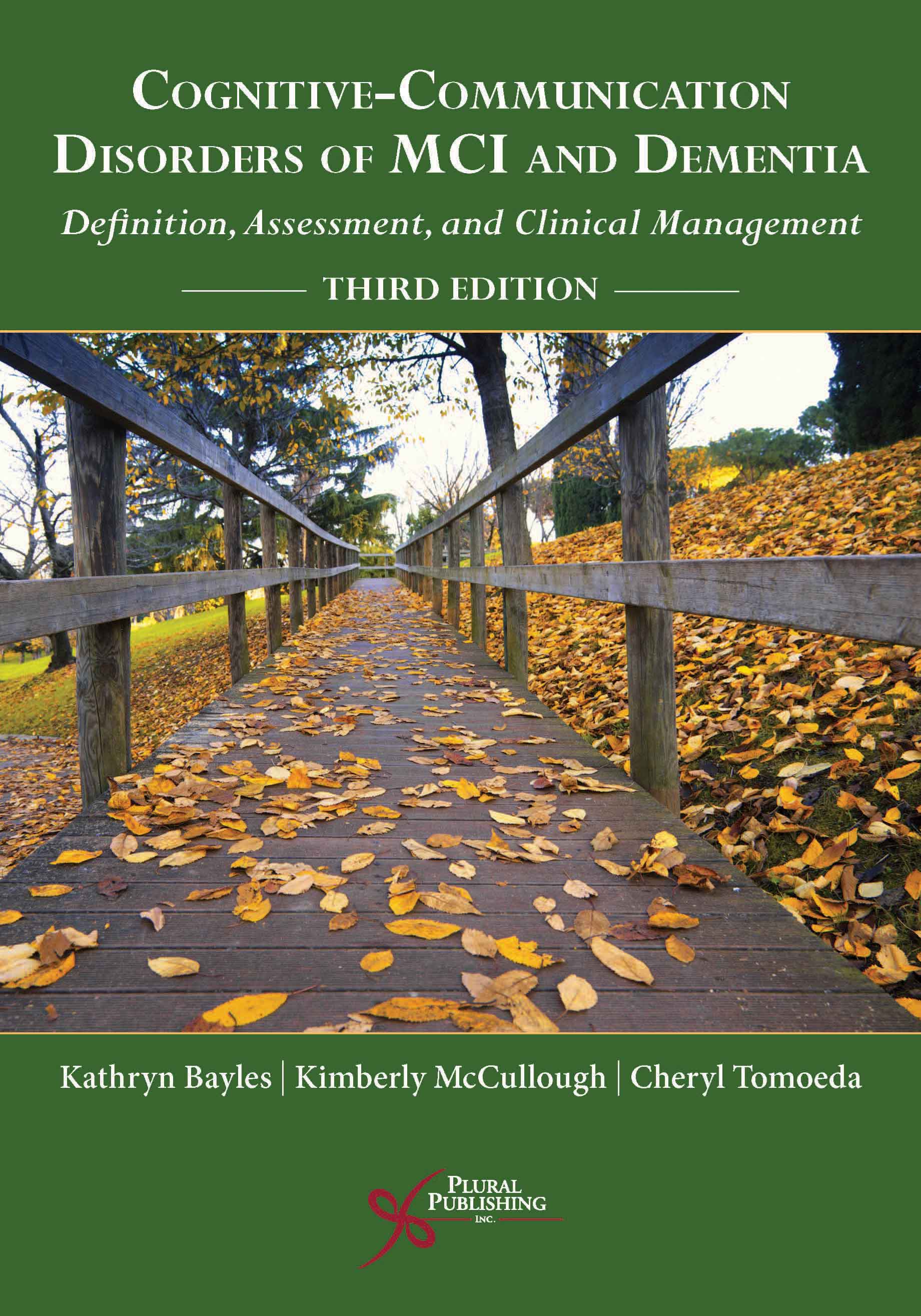
Cognitive-Communication Disorders of MCI and Dementia: Definition, Assessment, and Clinical Management
Third Edition
Kathryn Bayles, Kimberly McCullough, Cheryl K. Tomoeda
Details: 265 pages, B&W, Softcover, 7" x 10"
ISBN13: 978-1-63550-060-8
© 2020 | Available
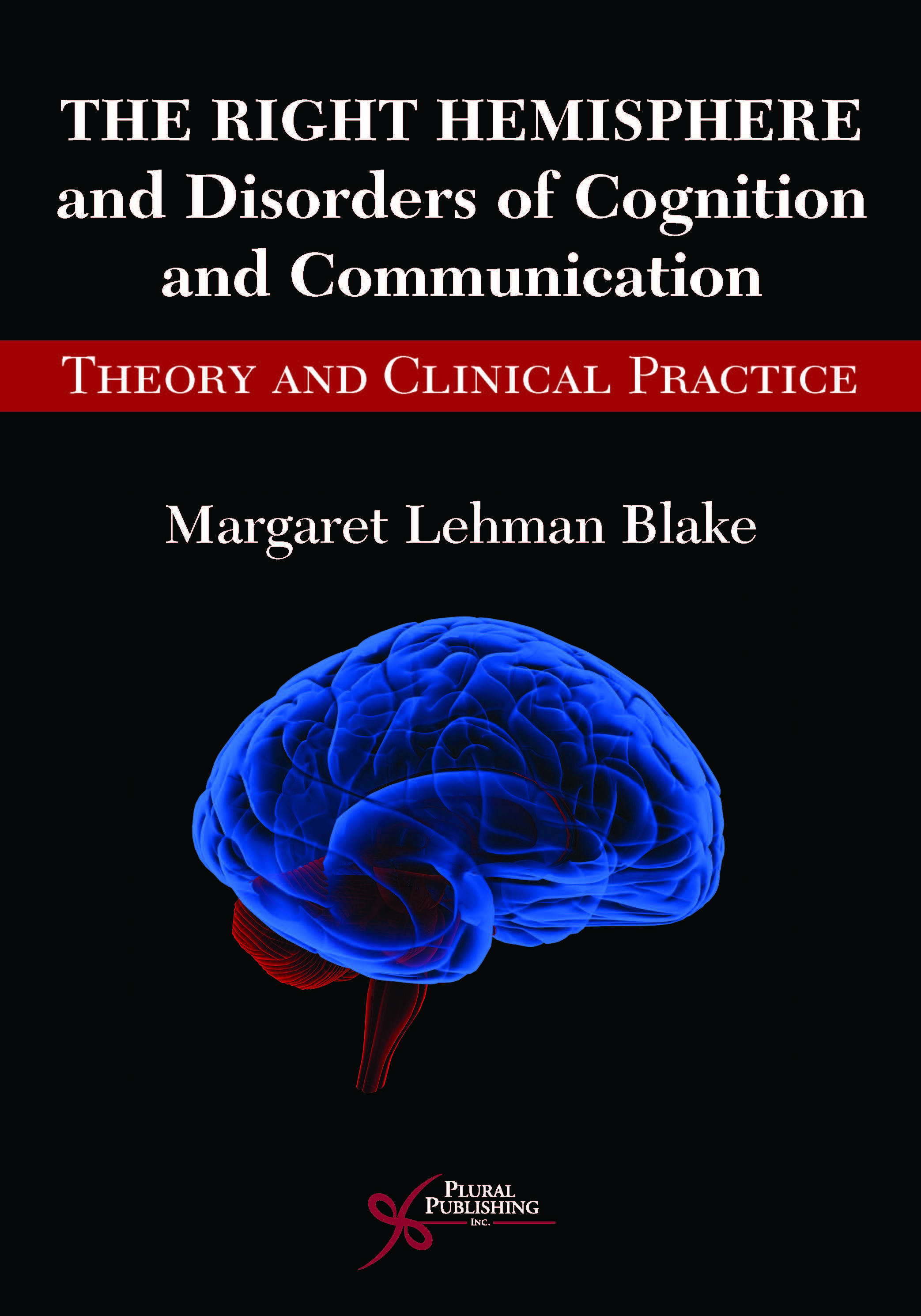
The Right Hemisphere and Disorders of Cognition and Communication: Theory and Clinical Practice
First Edition
Margaret Lehman Blake
Details: 301 pages, B&W, Softcover, 7" x 10"
ISBN13: 978-1-59756-962-0
© 2018 | Available
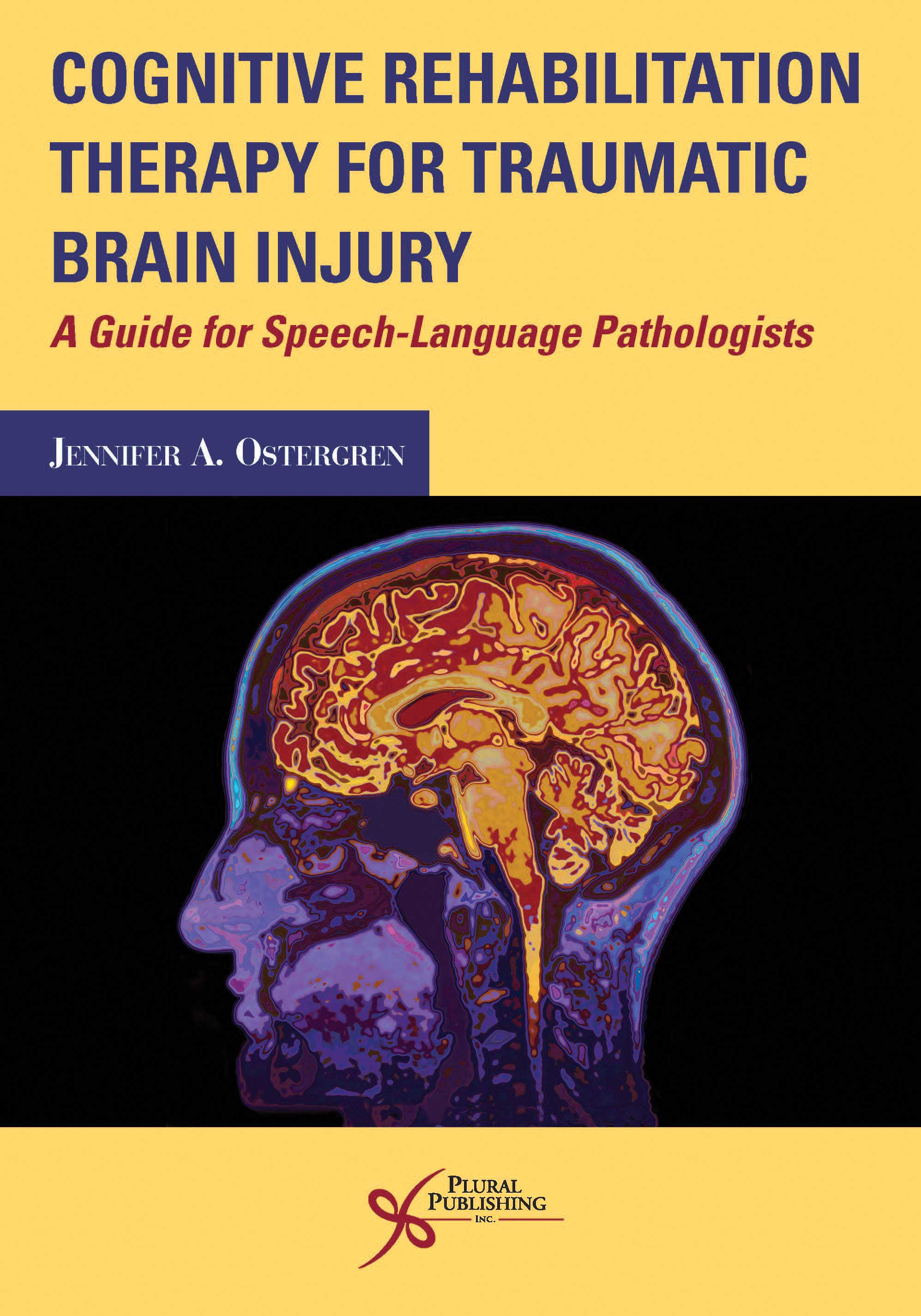
Cognitive Rehabilitation Therapy for Traumatic Brain Injury: A Guide for Speech-Language Pathologists
First Edition
Jennifer A. Ostergren
Details: 321 pages, B&W, Softcover, 7" x 10"
ISBN13: 978-1-59756-789-3
© 2018 | Available
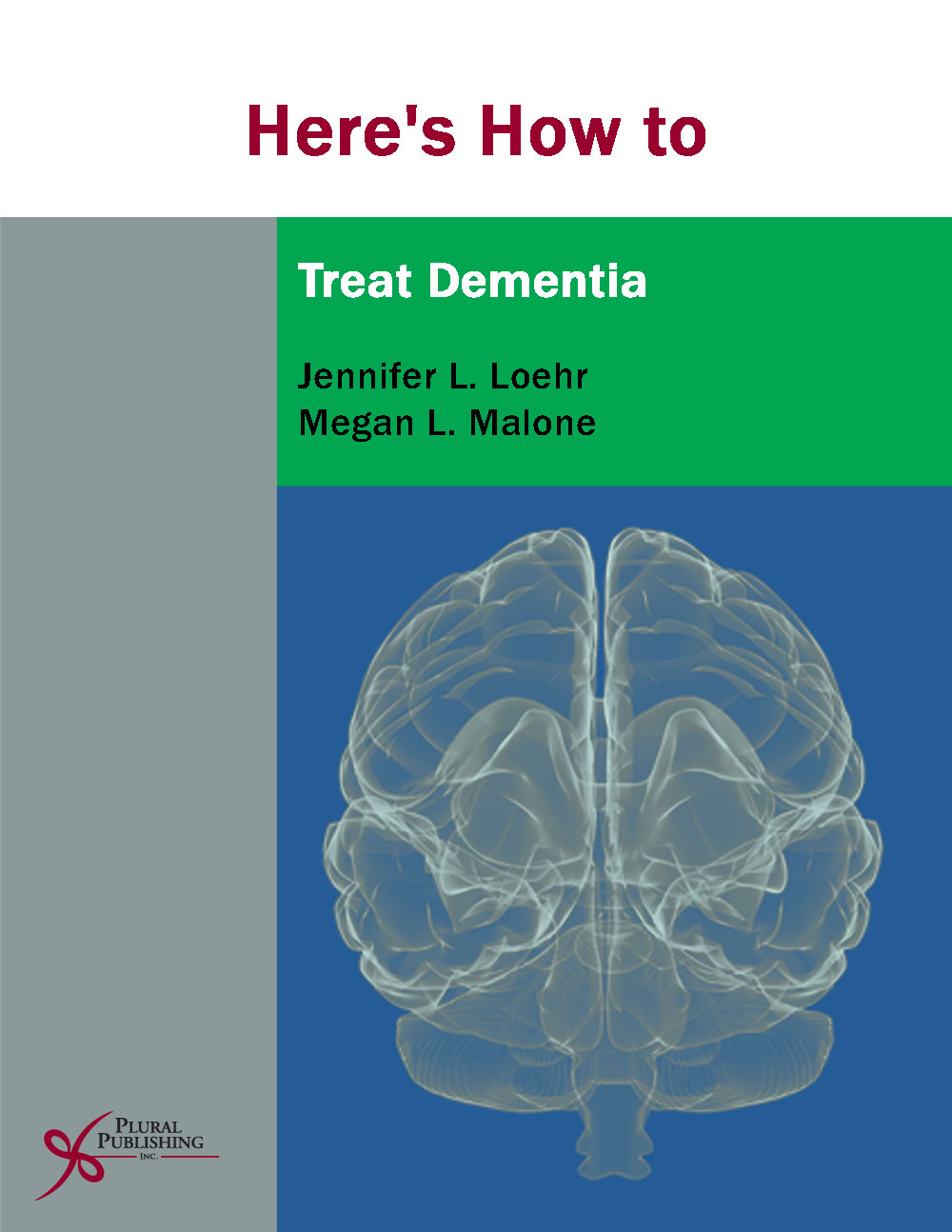
Here's How to Treat Dementia
First Edition
Jennifer L. Loehr, Megan L. Malone
Details: 200 pages, B&W, Softcover, 8.5" x 11"
ISBN13: 978-1-59756-448-9
© 2014 | Available
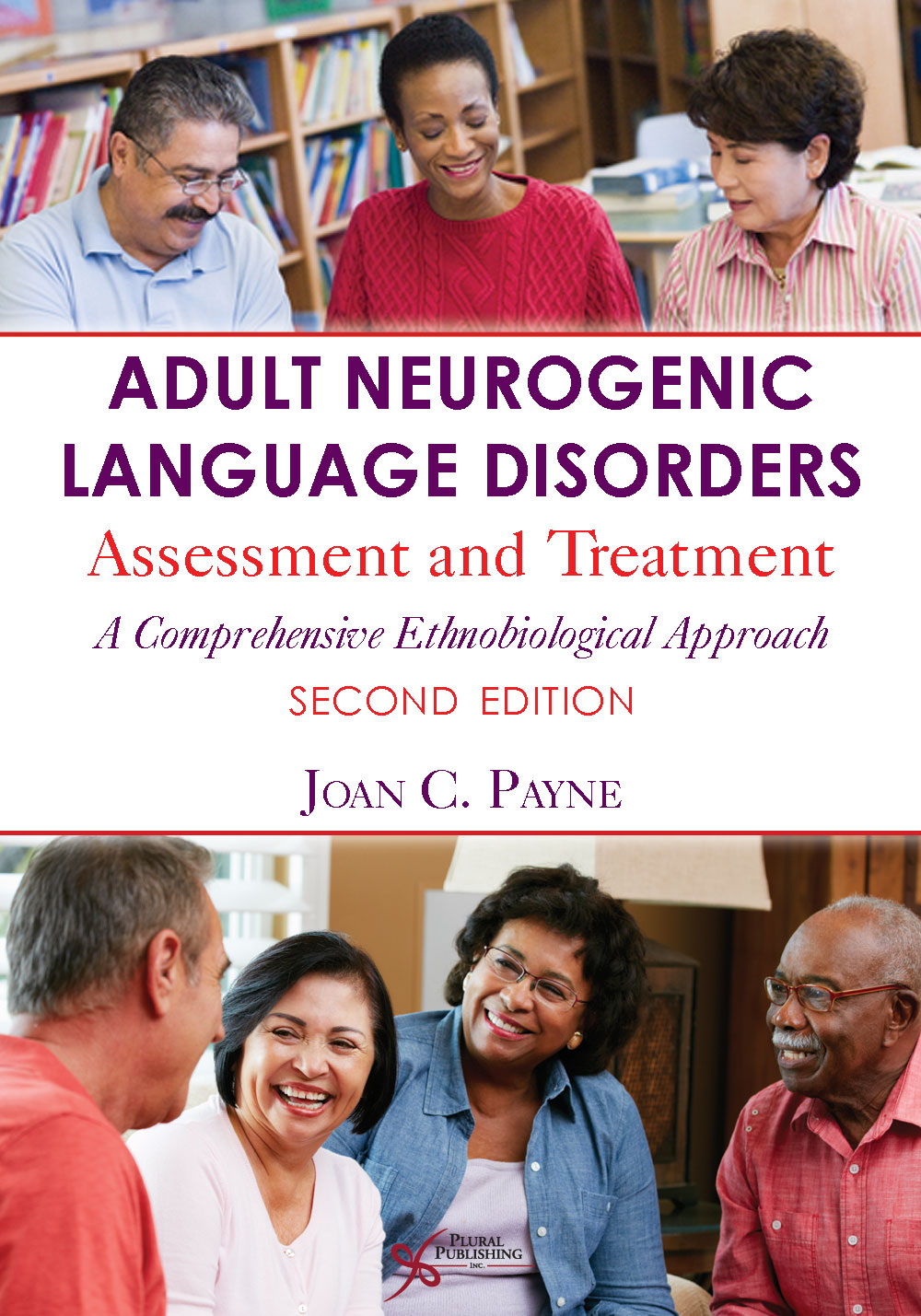
Adult Neurogenic Language Disorders: Assessment and Treatment. A Comprehensive Ethnobiological Approach
Second Edition
Joan C. Payne
Details: 392 pages, B&W, Softcover, 7" x 10"
ISBN13: 978-1-59756-503-5
© 2014 | Available
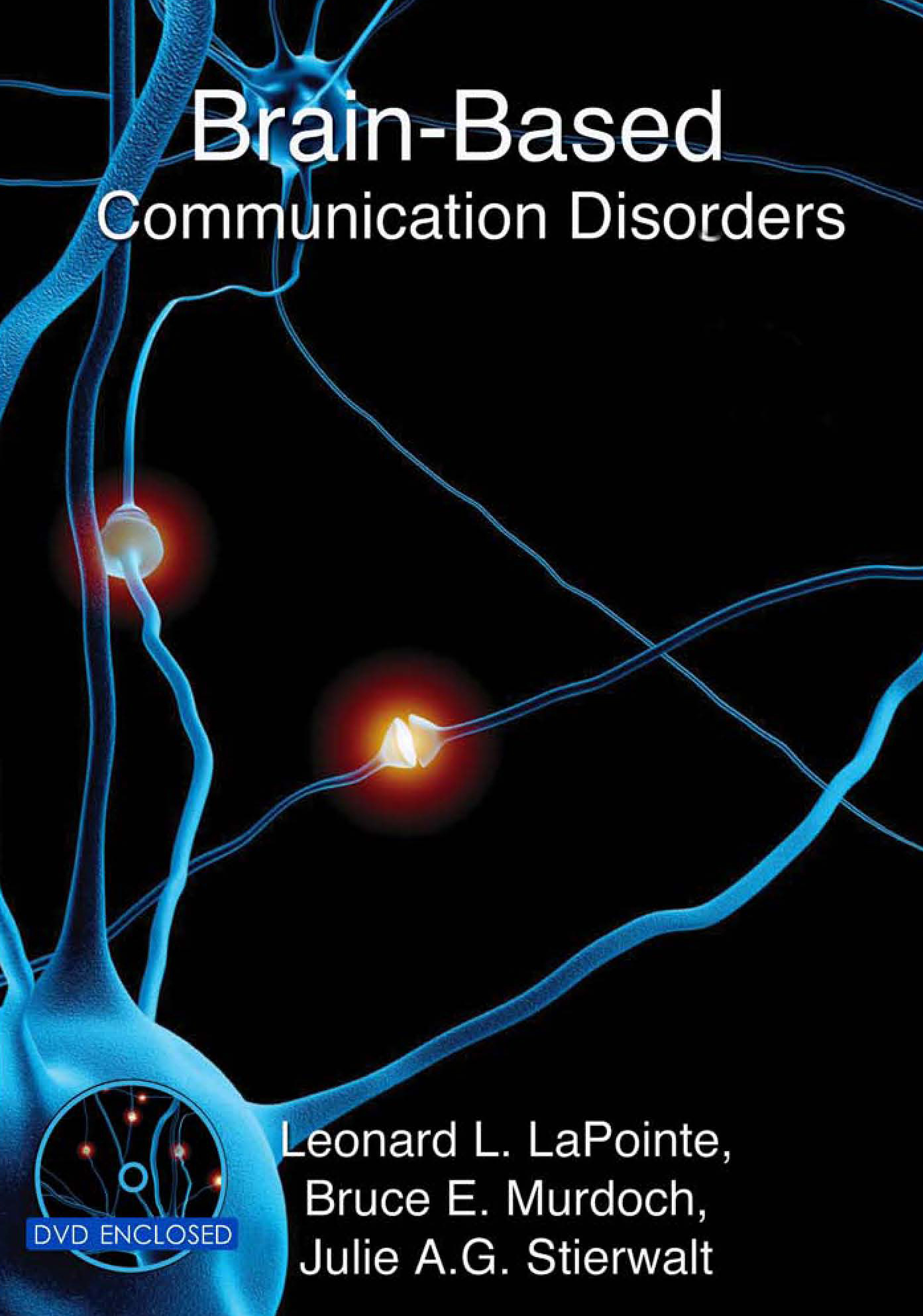
Brain-Based Communication Disorders
First Edition
Leonard L. LaPointe, Bruce E. Murdoch, Julie A. G. Stierwalt
Details: 265 pages, Full Color, eBook
ISBN13: 978-1-59756-704-6
© 2011 | Available
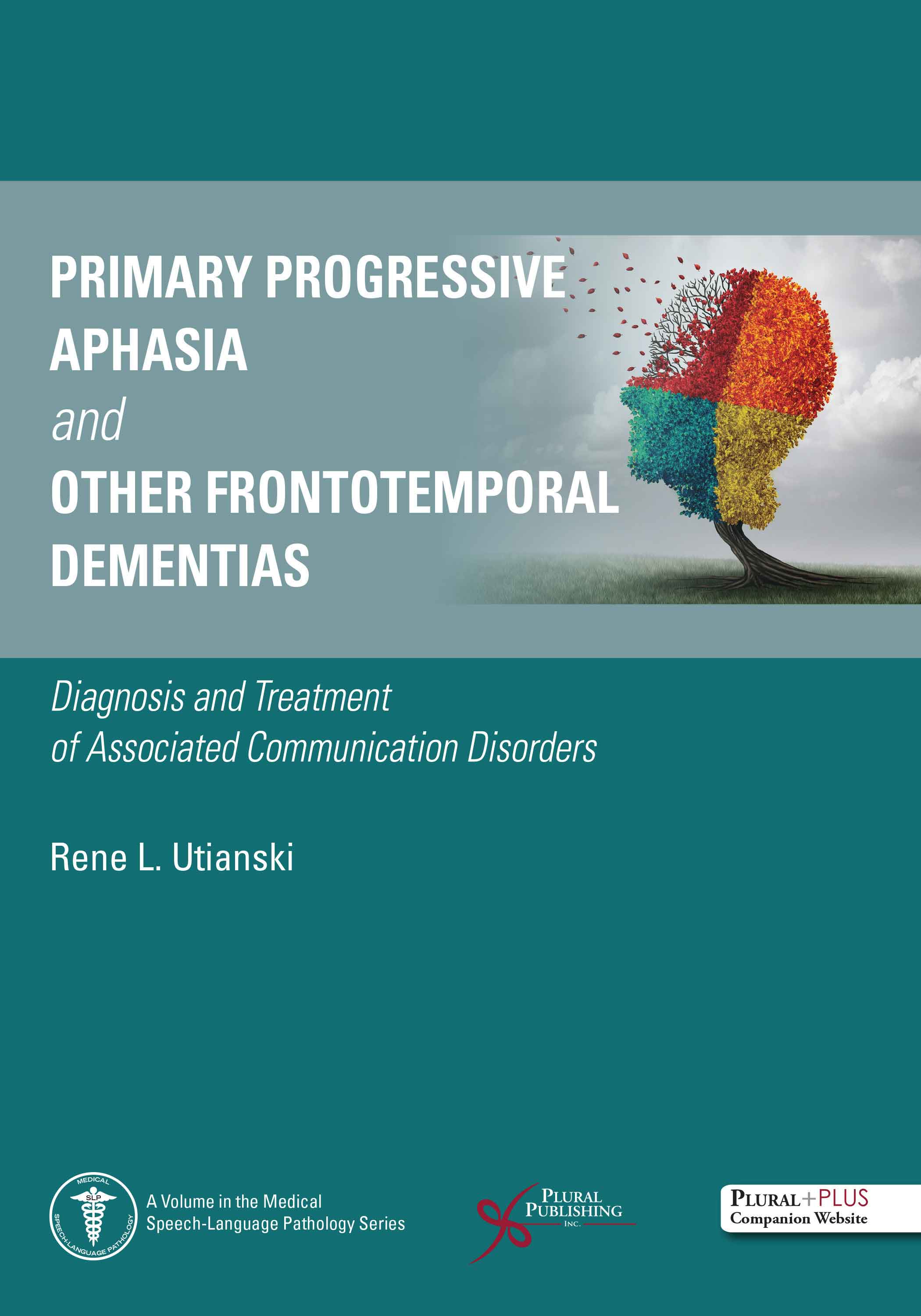
Primary Progressive Aphasia and Other Frontotemporal Dementias: Diagnosis and Treatment of Associated Communication Disorders
First Edition
Rene L. Utianski
Details: 188 pages, B&W, Softcover, 7" x 10"
ISBN13: 978-1-63550-160-5
© 2020 | Available
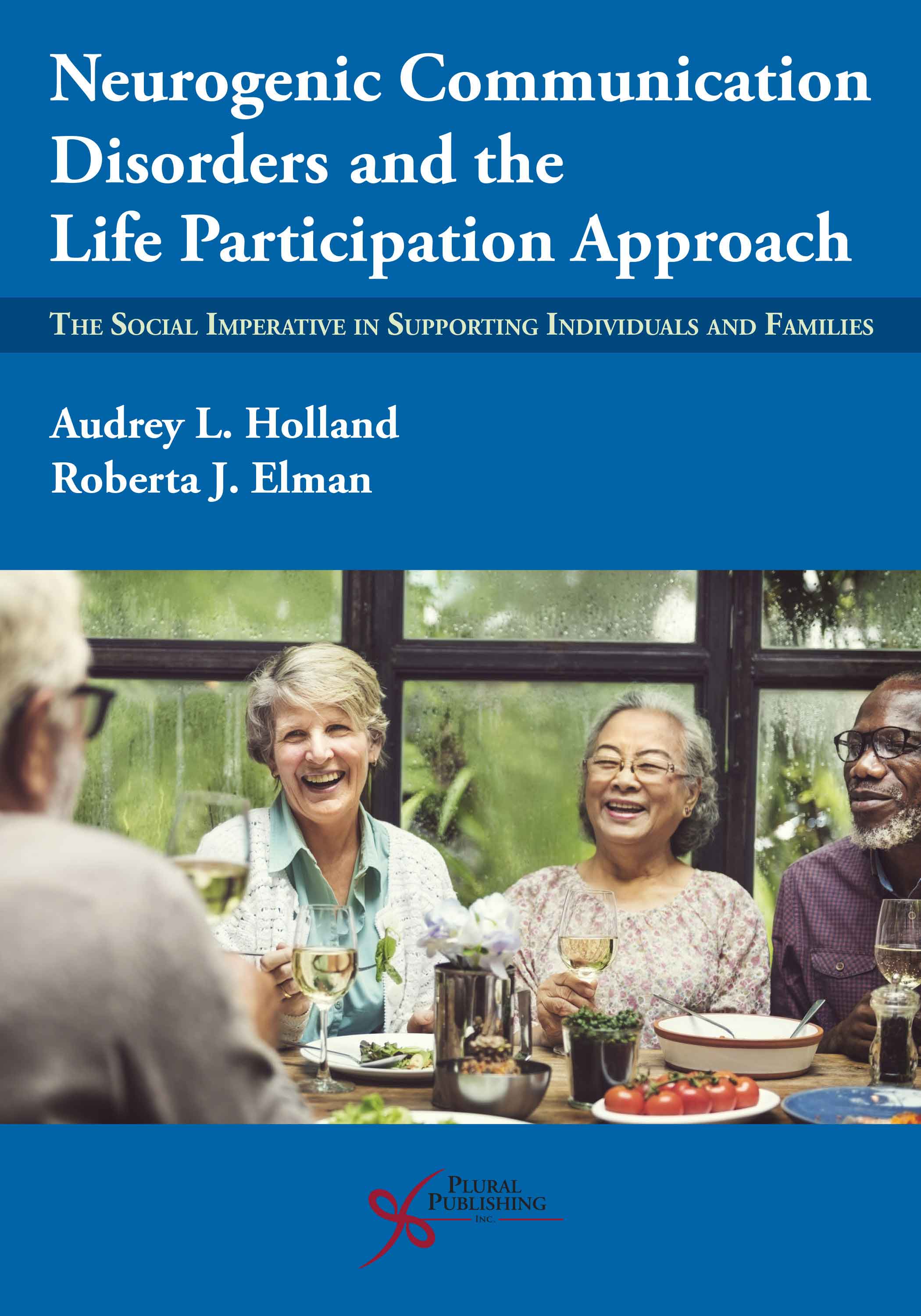
Neurogenic Communication Disorders and the Life Participation Approach: The Social Imperative in Supporting Individuals and Families
First Edition
Audrey L. Holland, Roberta J. Elman
Details: 242 pages, Softcover, B&W, 6" x 9"
ISBN13: 978-1-63550-295-4
© 2021 | Available
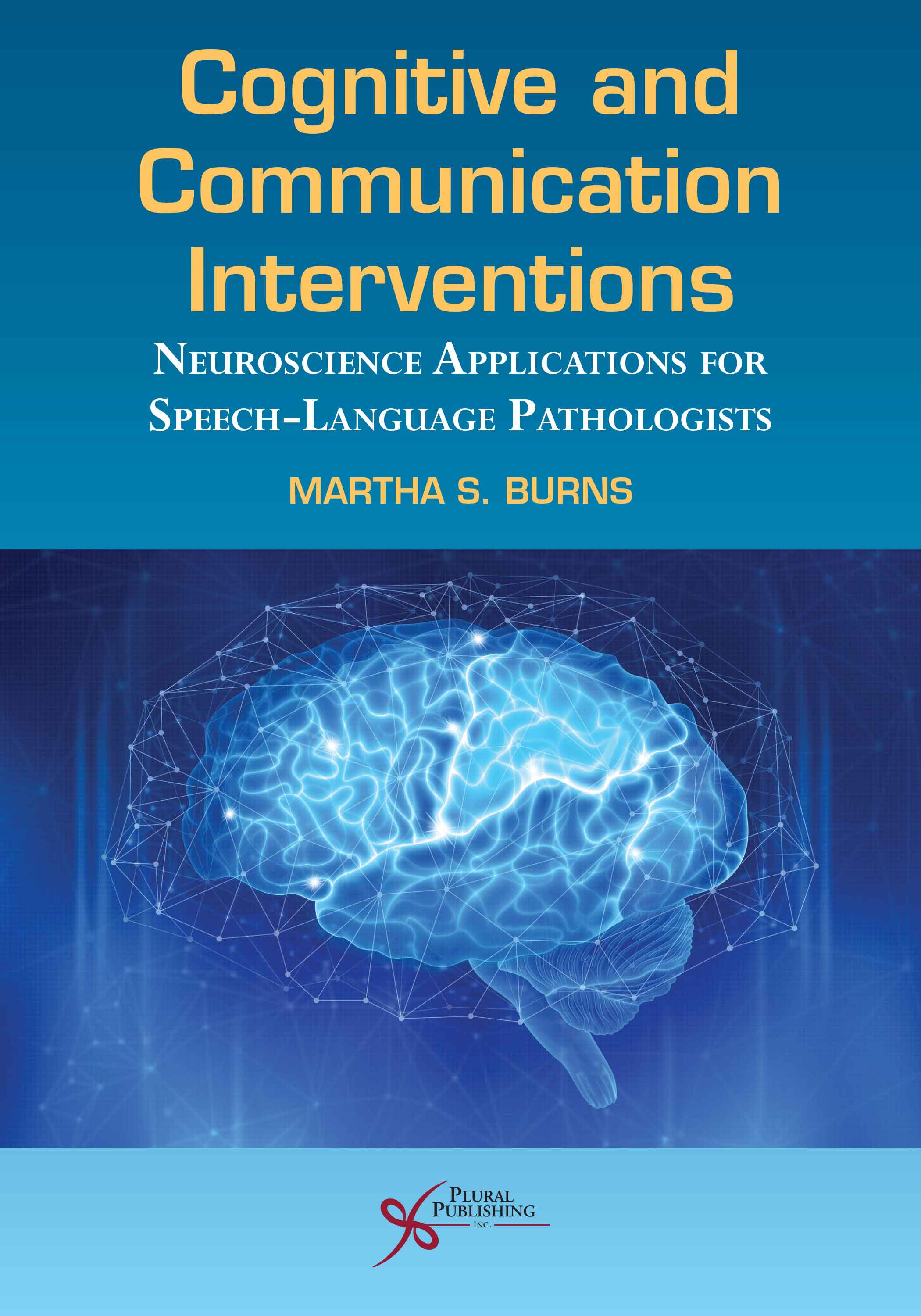
Cognitive and Communication Interventions: Neuroscience Applications for Speech-Language Pathologists
First Edition
Martha S. Burns
Details: 318 pages, B&W, Softcover, 7" x 10"
ISBN13: 978-1-63550-292-3
© 2021 | Available
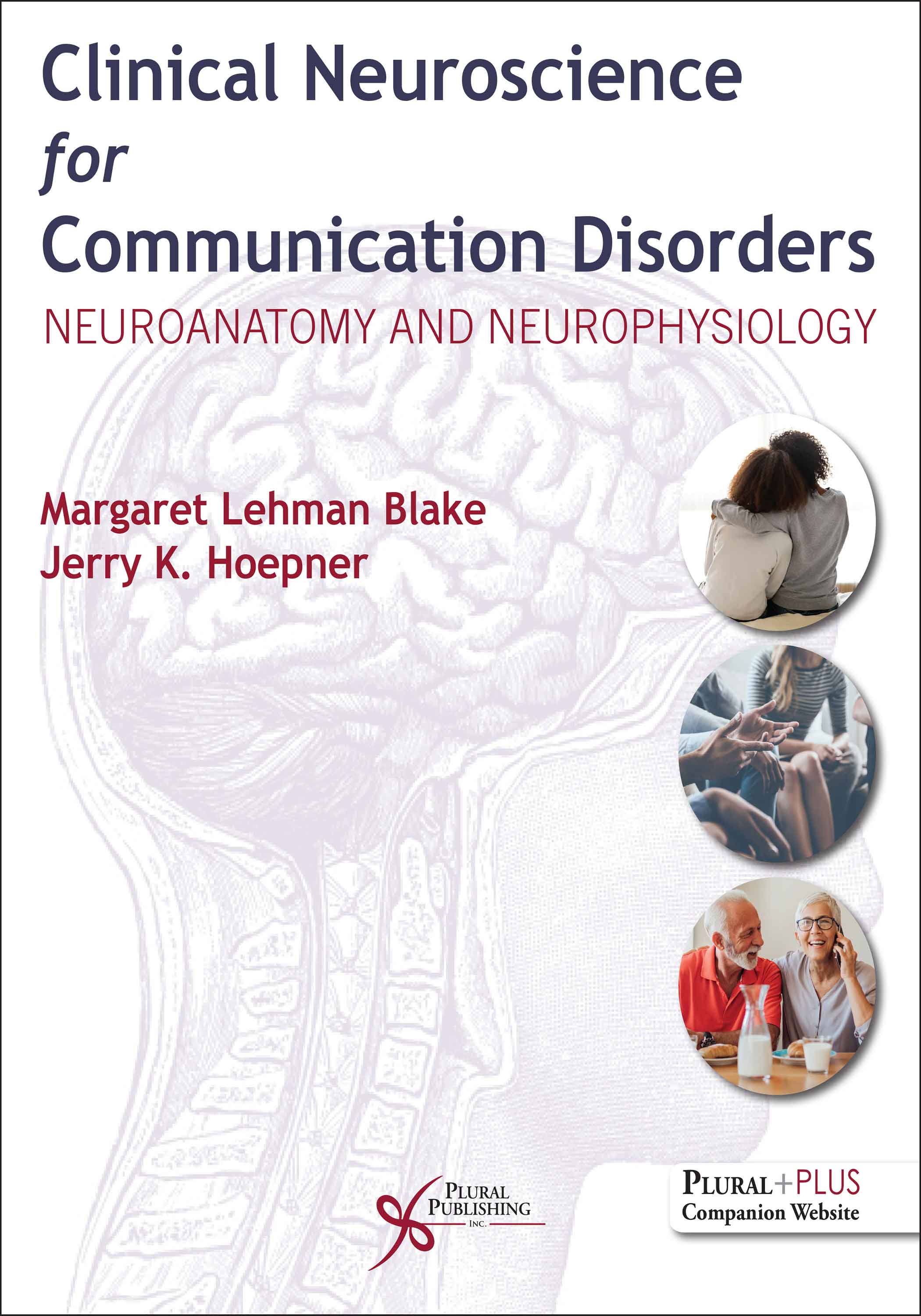
Clinical Neuroscience for Communication Disorders: Neuroanatomy and Neurophysiology.
First Edition
Margaret Lehman Blake, Jerry K. Hoepner
Details: 340 pages, Full Color, Hardcover, 8.5" x 11"
ISBN13: 978-1-63550-365-4
© 2023 | Available
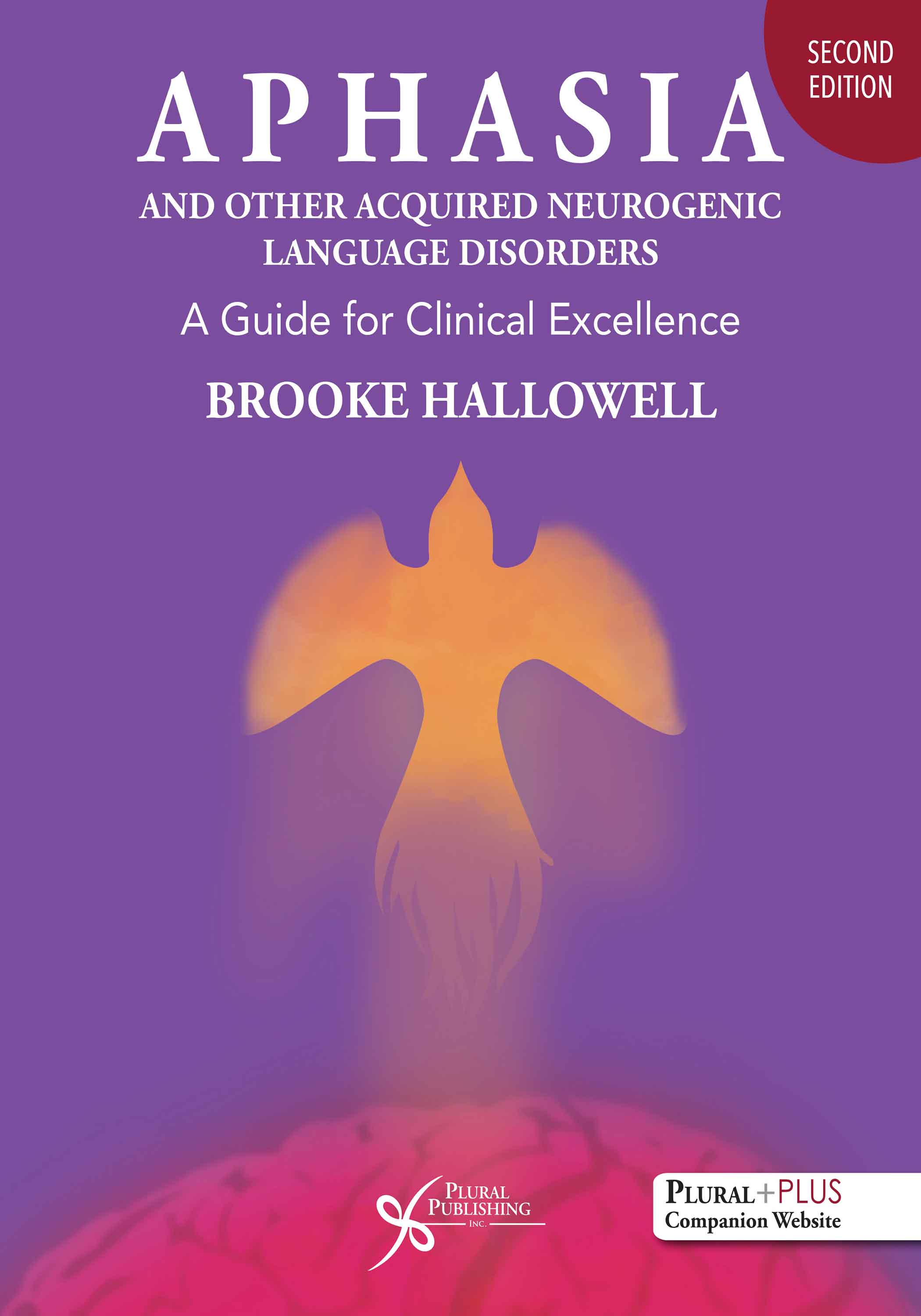
Aphasia and Other Acquired Neurogenic Language Disorders: A Guide for Clinical Excellence
Second Edition
Brooke Hallowell
Details: 629 pages, 2-Color with Full-Color Insert, Softcover, 8.5" x 11"
ISBN13: 978-1-63550-159-9
© 2023 | Available
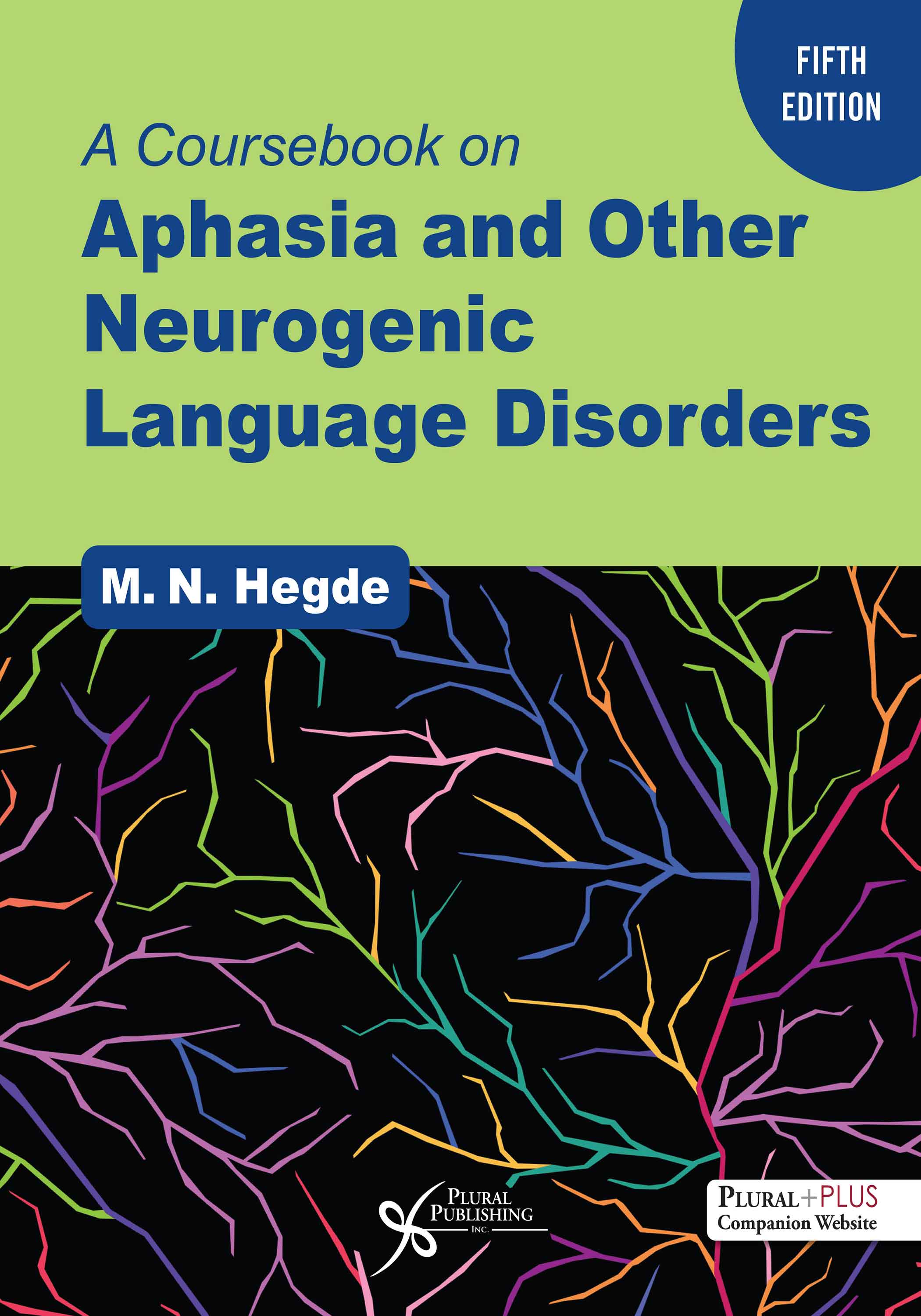
A Coursebook on Aphasia and Other Neurogenic Language Disorders
Fifth Edition
M.N. Hegde
Details: 426 pages, B&W, Spiral, 8.5" x 11"
ISBN13: 978-1-63550-422-4
© 2024 | Available
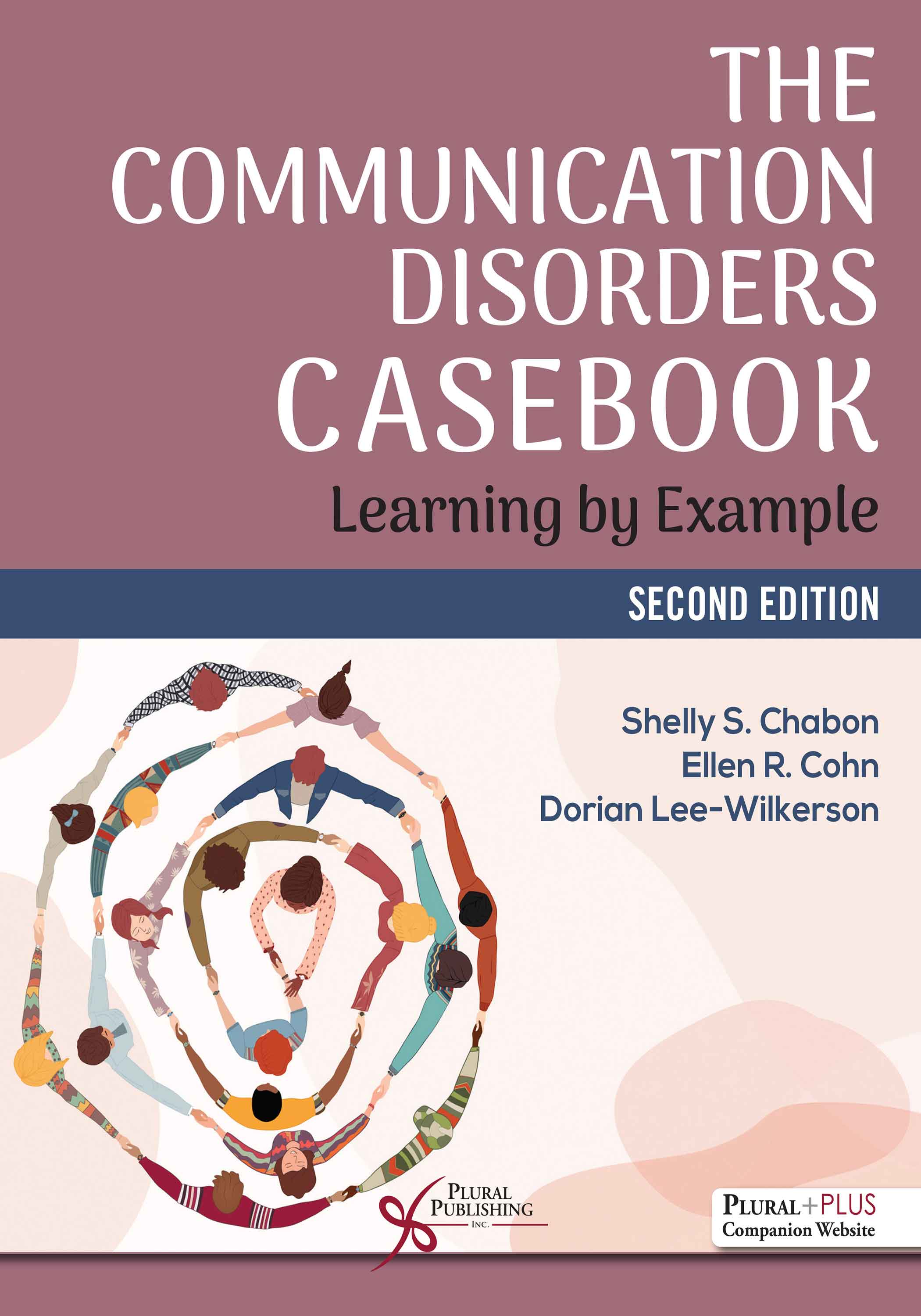
The Communication Disorders Casebook: Learning by Example
Second Edition
Shelly S. Chabon, Ellen R. Cohn, Dorian Lee-Wilkerson
Details: 563 pages, B&W, Softcover, 8.5" x 11"
ISBN13: 978-1-63550-409-5
© 2025 | Available
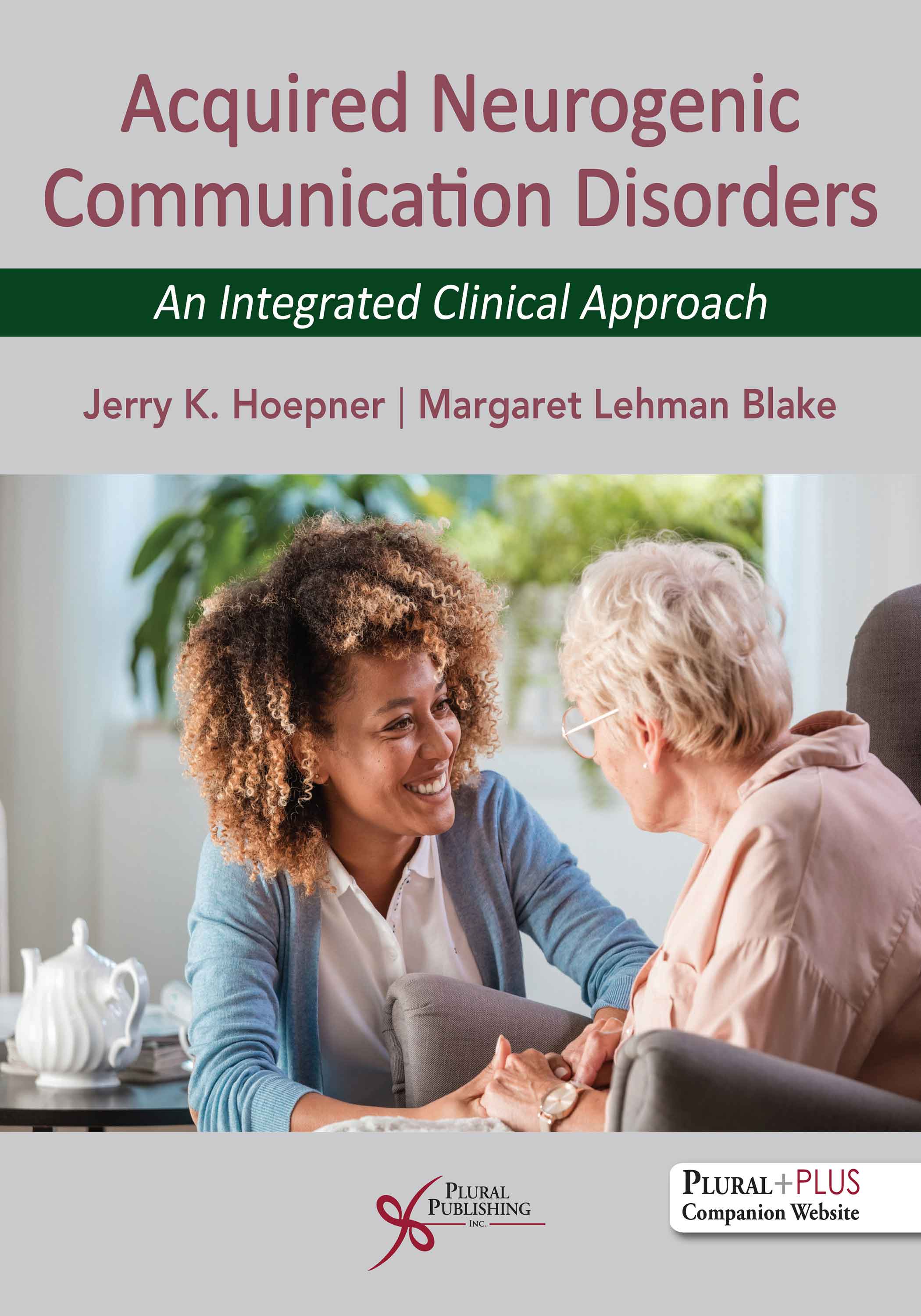
Acquired Neurogenic Communication Disorders: An Integrated Clinical Approach
First Edition
Jerry K. Hoepner, Margaret Lehman Blake
Details: 362 pages, Full Color, Softcover, 8.5" x 11"
ISBN13: 978-1-63550-425-5
© 2025 | Available
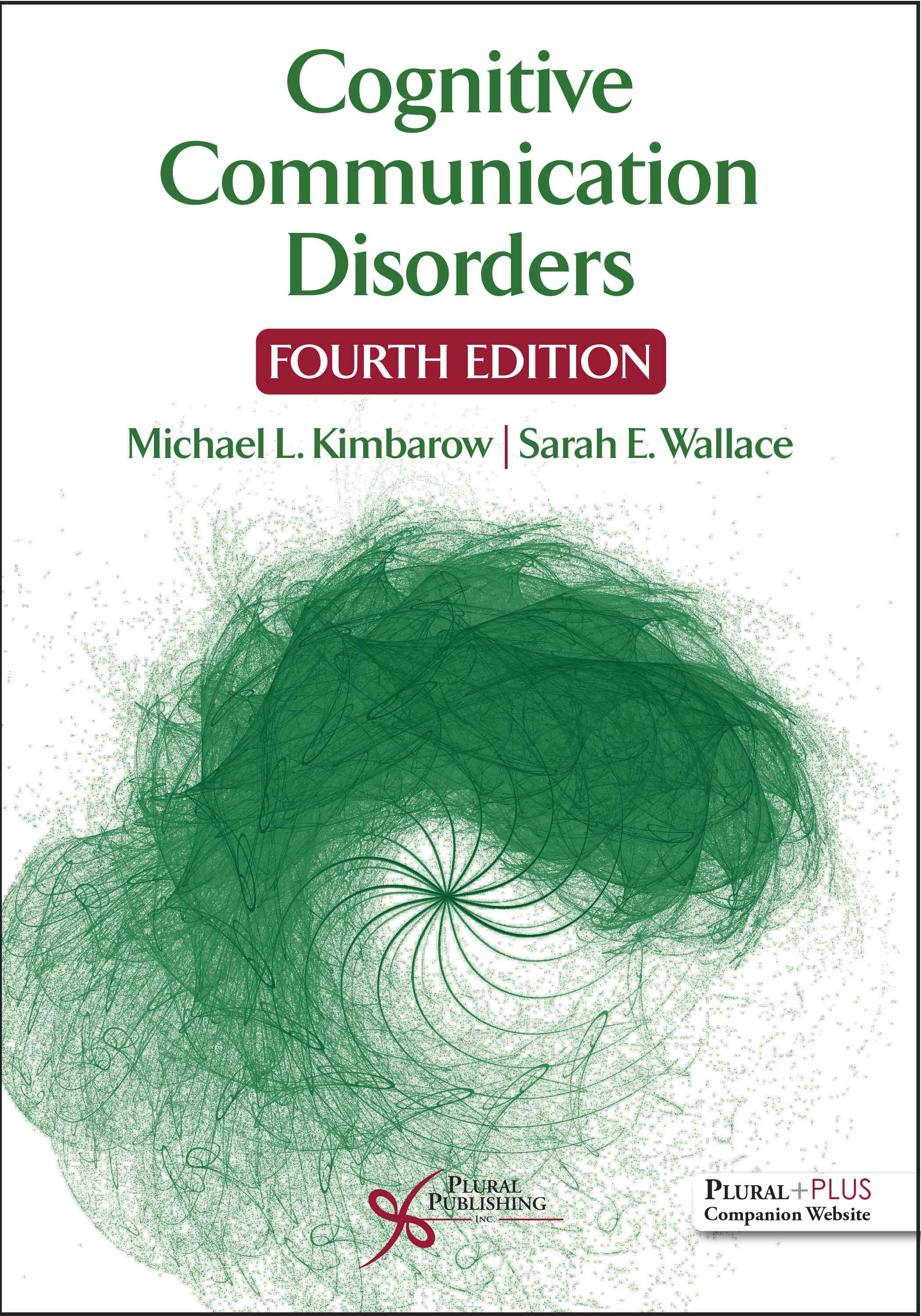
Cognitive Communication Disorders
Fourth Edition
Michael L. Kimbarow, Sarah E. Wallace
Details: 550 pages, B&W, Softcover, 7" x 10"
ISBN13: 978-1-63550-511-5
© 2024 | Available


